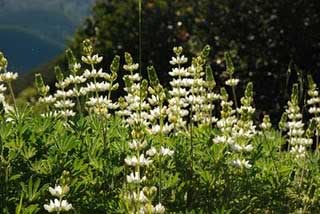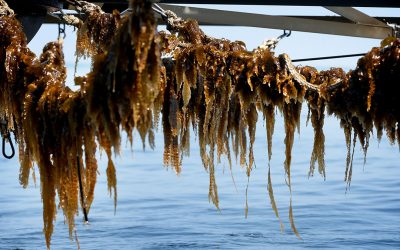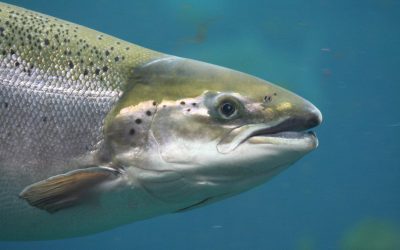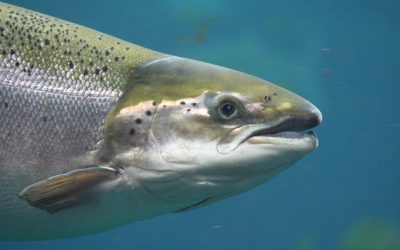Research: Rainbow trout can tolerate high levels of lupine

The use of lupine seeds in fish feed has been limited, despite the fact that they are rich in proteins. This is partially to do with the bitter taste and lack of knowledge about how much lupine a fish can take.
Now both these isses have been dealth with in a new doctoral thesis at the Aquaculture Protein Centre in Norway, by PhD student Edison Rodrigo Serrano Gutierrez
Lupines are a legume belonging to the same family of plants as peas and soybeans. Lupine seeds contain up to 45% protein, which is higher than both peas and soybeans. Salmon need feed with a high protein level, thus lupine is an interesting source of protein.
Plant ingredients contain many different anti-nutritional factors, but lupines generally have a low content of many of these in comparison to other legumes and oil seeds. However, lupine contains several different alkaloids, which is a large group of nitrogen-containing cyclic compounds that taste bitter.
For this reason, most types of lupines are not used in feed. The most important alkaloids in yellow lupines are lupinine and sparteine.
Serrano carried out a series of feeding trials with different levels of white lupines and two different quinolizidine alkaloids (lupinine and sparteine) which were solated from lupines.
The purpose was to find the limit of how much lupines rainbow trout is willing to eat and to determine the tolerance and acute toxicity concentration of these alkaloids.
The results showed that the fish tolerated high levels (up to 50%) of white lupines with no negative effects on feed intake, nutrient digestibility, growth performance and health. The fatty acid profile of the muscles was however slightly altered when the level of lupine exceeded 30% of the feed.
The two dose-response experiments with pure alkaloids (lupinine and sparteine) showed that these do not cause any adverse short-term risk to the health of rainbow trout. Although, the bitter taste of alkaloids, led to reduced feed uptake, and thereby decreased growth, when the level exceeded 100 mg alkaloids pr kg feed.
This level is higher than the alkaloid content found in today’s sweet lupine varieties that are commonly used in fish feed formulations.
The PhD project is in cooperation between the Aquaculture Protein Centre, a Centre of Excellence, with the Norwegian University of Life Sciences as host institution (UMB) and the Catholic University of Temuco, Chile.
In Chile, the fish farming industry is as big as it is in Norway, and there is a need to find alternative feed sources to replace fish meal. In South America a variety of lupine species are grown and there is increased interest in cultivating these since they are well adjusted to the climate.
These species tend to have both a higher protein content and alkaloid content than the so-called sweet lupines that are grown in larger volumes – mainly in Australia.
Lupines with a higher level of alkaloids are easier to grow, because the alkaloids are the plant’s self defense against grazing, insects and fungi. To increase the use of this plant in feed, plant breeders have reduced the level of alkaloids to a minimum, however this increases the need for pesticides in the production.
The results of Serrano means that plant producers now can produce semi-bitter lupine species containing ten times more alkaloids than today’s sweet lupine types. These plants still tastes good for the fish and through the alkaloids they have a better defense against insects.
Edison Rodrigo Serrano Gutierrez’ thesis is titled “Biological responses in rainbow trout (Oncorhynchus mykiss) after dietary intake of lupine seeds and quinolizidine alkaloids”.











